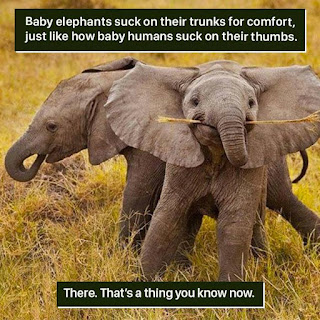ALL scientific facts about nature
1. Babies have about 100 more bones than adults
Babies have about 300 bones at birth, many of which have cartilage between them. This extra flexibility helps them pass through the birth canal and also allows for faster growth. With age, many of the bones fuse, leaving 206 bones that make up an average adult skeleton.

2. Eiffel Tower can be 15 cm tall during summer
When a substance is heated, its particles increase further and form larger amounts - this is known as thermal expansion. Conversely, a drop in temperature causes it to shrink again. For example, the mercury level inside the thermometer increases, and the number of mercury changes with the ambient temperature. This effect is most dramatic in gases, but also in liquids and solids such as iron. For this reason, large structures such as bridges are built with expansion joints that allow them to expand and contract without causing any damage.
3. 20% of the Earth's oxygen is produced by the Amazon rainforest
Our atmosphere is made up of about 78 percent nitrogen and 21 percent oxygen, with some other gases present in small quantities. Most organisms living on Earth require oxygen to survive, converting it to carbon dioxide as they breathe. Thankfully, plants continuously replenish our planet's oxygen levels through photosynthesis. During this process, carbon dioxide and water are converted into energy, releasing oxygen as a by-product. Covering 5.5 million square kilometers (2.1 million square miles), the Amazon rainforest cycles a significant proportion of the Earth's oxygen, absorbing large amounts of carbon dioxide at the same time.
4. Some metals are so reactive that they come into contact with water
There are some metals - including potassium, sodium, lithium, rubidium, and cesium - that are so reactive that they oxidize (or tarnish) immediately upon exposure to air. They can also explode when dropped in water! All elements try to be chemically stable - in other words, to be a complete external electron shell. To achieve this, metals flow electrons. Alkali metals have only one electron on their outer covering, which makes them ultra-keen to make this unwanted passenger bond to another element. As a result, they form compounds with other elements so easily that they do not exist independently in nature.
5. One teaspoon of a neutron star will weigh 6 billion tons
A neutron star is the remnant of a massive star that has run out of fuel. The dying star explodes into a supernova, while its core collapses on its own due to gravity, forming a super-dense neutron star. Equivalent to the mass of the Sun (ie 2 x 1030 kg / 4.4 x 1030 lb) In solar astrophysicists, astronomers measure the mass of stars or galaxies in solar masses. Typical neutron stars have masses of up to three solar masses, spherical with a radius of about ten kilometers (6.2 mi) - resulting in some of the densest matter in the known universe.
6. Hawaii moves about 7.5 cm to Alaska every year
The earth's crust is divided into huge pieces called tectonic plates. These plates are in constant motion, driven by currents in the Earth's upper mantle. Warmer, less-dense rocks erupt before cooling and sinking, giving rise to circular convection currents, which act like huge conveyor belts, gradually moving tectonic plates over them. Hawaii sits in the middle of the Pacific Plate, which is slowly flowing northwest toward the North American Plate, back toward Alaska. The speed of the plates is equal to the speed at which our nails grow.
7. Chalk is made from fossils of micro-billion plankton
Small single-celled algae, called coccolithophores, have lived in the Earth's oceans for 200 million years. Unlike any other marine plant, they surround themselves with minuscule plates of calcite (coccoliths). 100 million years ago, conditions were fine for Coccolithophorus to accumulate in the seabed with a thick layer coating a white layer. As further sediment was formed above, the pressure compressed the coccolith to form rock, depositing the white rocks of Dover such as chalk. Coccolithophores are just one of many prehistoric species that have become immortalized in fossil form, but how do we know how old they are? Over time, the rocks form in horizontal layers, with older rocks at the bottom and younger rocks near the top. By studying the type of rock in which fossils are found, paleontologists can estimate its age. Carbon dating estimates that the age of fossils is more accurate, based on the rate of decay of radioactive elements such as carbon-14.amazing facts in Hindi about nature



No comments:
Post a Comment